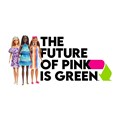
Subscribe & Follow
Local study finds ships a major source of litter on SA beaches

The researchers collected bottles and other single-use containers at 32 beaches around the South African coast to infer their sources based on their age and country of manufacture. Most bottles were plastic, despite well-developed recycling initiatives for polyethylene terephthalate (PET) and high-density polyethylene (HDPE) bottles in South Africa.
“The problem is that we produce so many single-use bottles in South Africa that even the relatively high recovery rates achieved translate into billions of bottles not being recycled,” said lead researcher Professor Peter Ryan.
Bottle densities were greatest at urban beaches, where most come from local, land-based sources. Street litter in Cape Town and Gqeberha was dominated by bottles made in South Africa (99%), with foreign-manufactured bottles increasing from urban (4%) through semi-urban (24%) to remote beaches (45%).
Foreign bottles were most common at beaches in De Hoop Nature Reserve and the Namaqualand National Park, where more than 70% were from other countries.
Foreign bottles largely from China, Asia
“Almost all foreign bottles were PET water bottles from China and other Asian countries, with smaller numbers from South America and Europe. This fact, coupled with their recent manufacture dates, indicates that most foreign bottles are dumped illegally from ships,” said Ryan. “Bottles from nine countries on four continents were found within three months of the date of manufacture – they simply couldn’t have drifted here that quickly.”
Dumping of plastics at sea has been banned since 1989, but clearly many ships are still ignoring these regulations. The study calls on the International Maritime Organisation to tighten regulations to ensure that ships use port reception facilities for such waste, rather than dumping their rubbish at sea.
Unlike PET drink bottles, foreign HDPE bottles were more common along the southeast coast of South Africa than along the west coast, consistent with many of these bottles arriving by long-distance drift across the Indian Ocean from southeast Asia. The most common country of origin for these bottles was Indonesia, and most newly-arrived HDPE bottles were 4–6 years old.
Ryan said the study confirms that the east coast of Africa and adjacent island nations receive large amounts of buoyant litter leaking into the sea from southeast Asia, and especially from Indonesia.
Reducing plastic leakage
“It is widely assumed that 80% of plastic pollution in the sea comes from land-based sources. However, this figure is a very crude estimate and it is clear that the proportion varies depending on where you are. Our recent work has shown that much land-based litter doesn’t disperse far from where it enters the sea. Bottles offer a useful way to track litter origins because they contain information on when and where they were manufactured,” shared Ryan.
Beaches are key attractions for tourism and recreation, and considerable effort is made to keep beaches clean, yet many beaches still have substantial litter loads. To tackle beach litter in South Africa, Ryan said we need to greatly reduce plastic leakage from land-based sources, both locally and in southeast Asia, as well as improve measures to prevent the illegal dumping of plastics and other persistent wastes from ships.
Related
Working backwards to save the sea 24 Dec 2024 Surprising study: Amount of plastic ingested by seabirds remains unchanged since the 80s 16 Sep 2024 Nigeria is the world’s 2nd biggest plastic polluter: expert insights into the crisis 13 Sep 2024 #YouthMonth: BET Software salutes the torchbearers of tomorrow who dare to dream 4 Jun 2024 SADiLaR celebrates PhD aimed at improving Sesotho learners' reading skills 4 Jun 2024 The value of plastic waste 24 Apr 2024 Local consortium awarded UK grant for green H2 export study in EC 22 Apr 2024 Woolworths trials the removal of plastic barrier bags 8 Apr 2024








